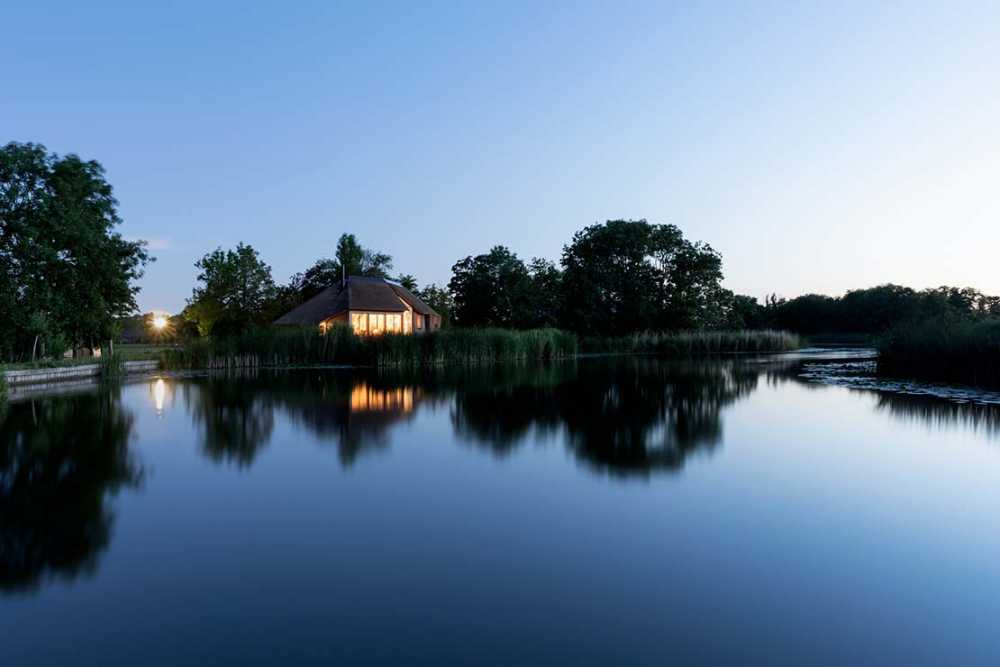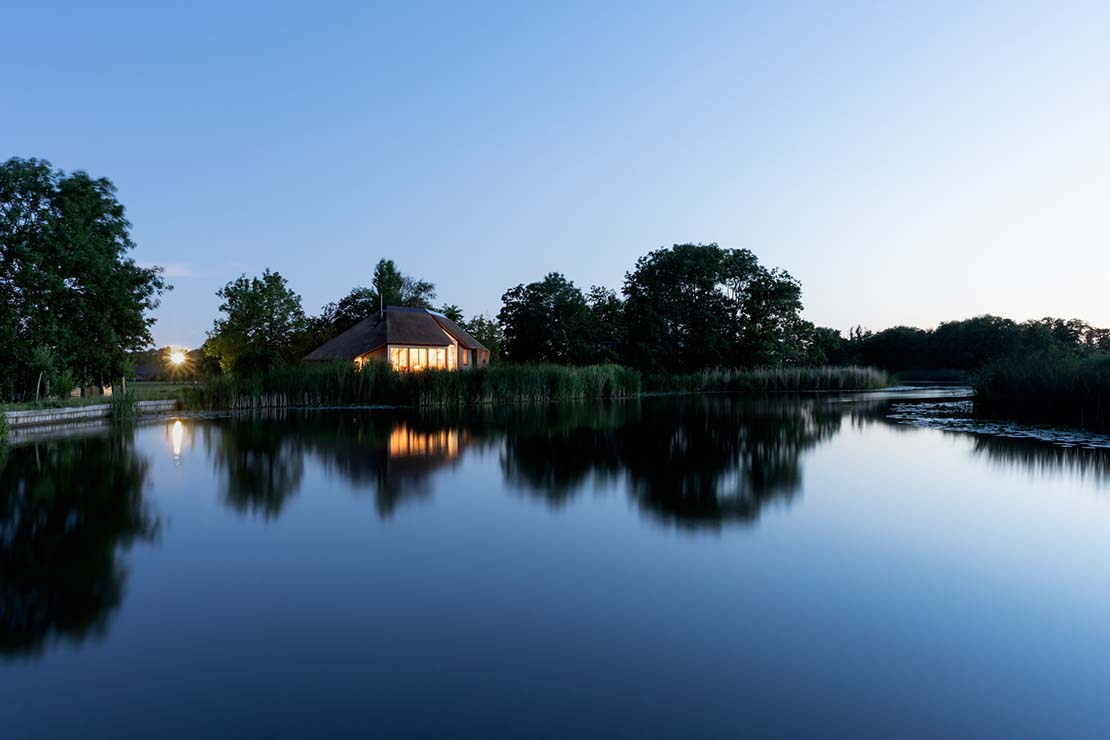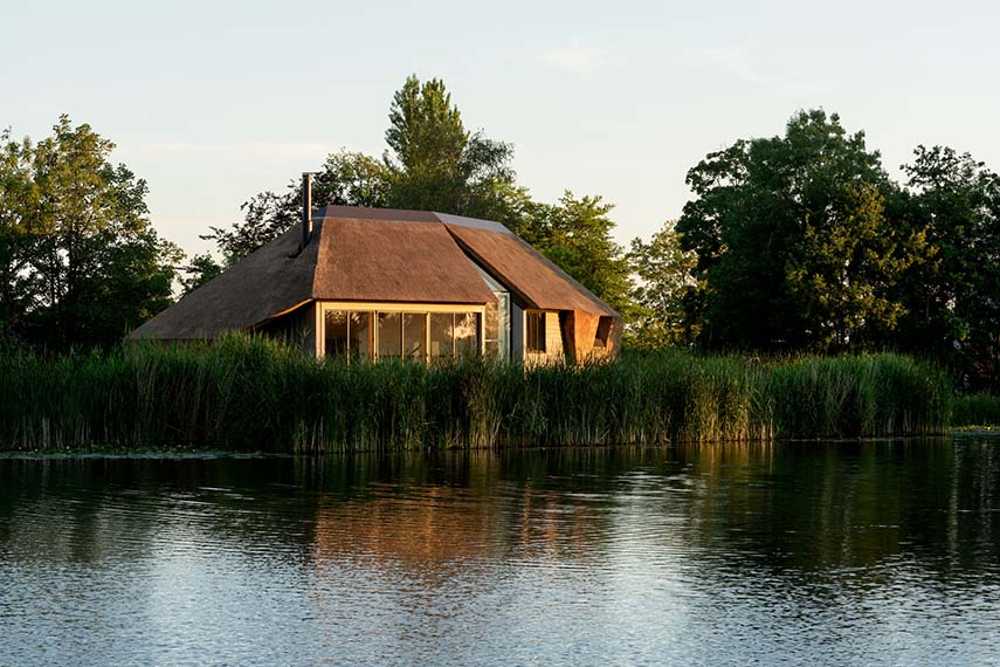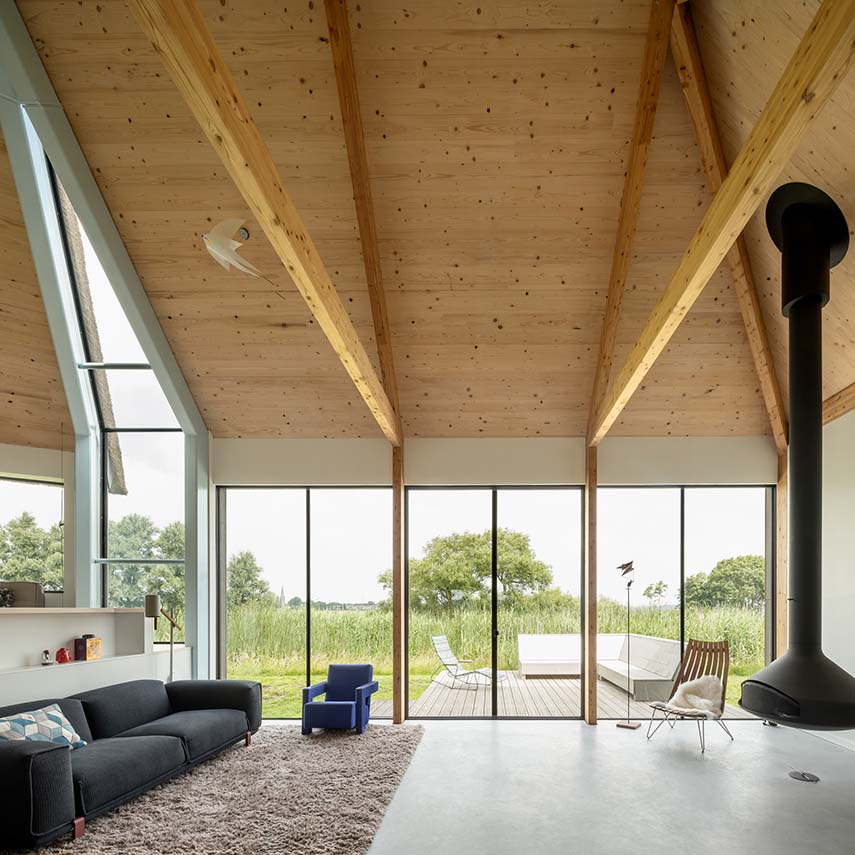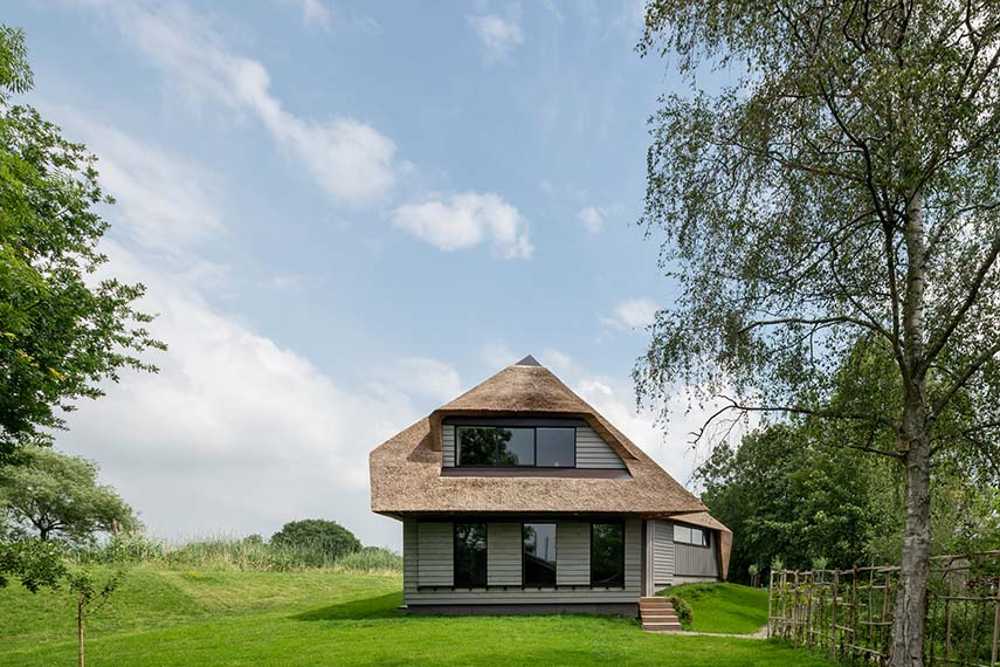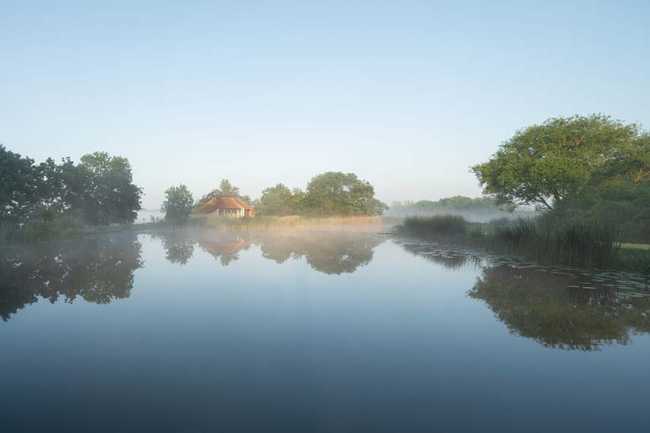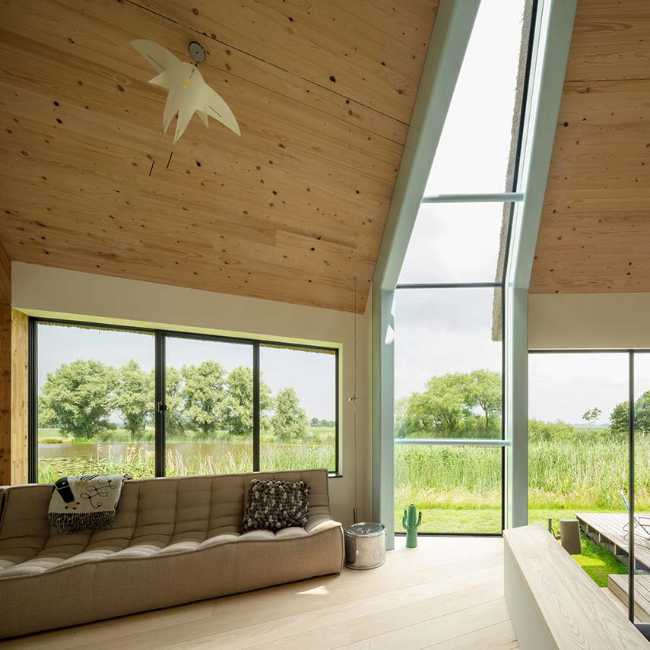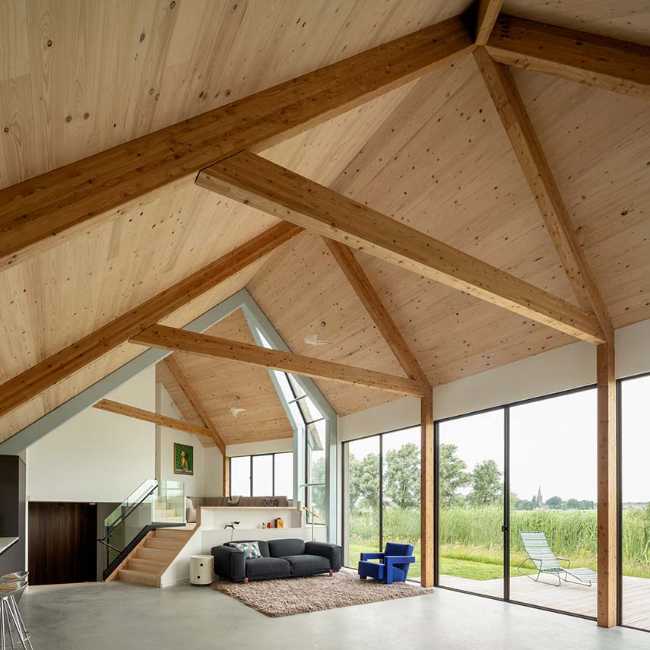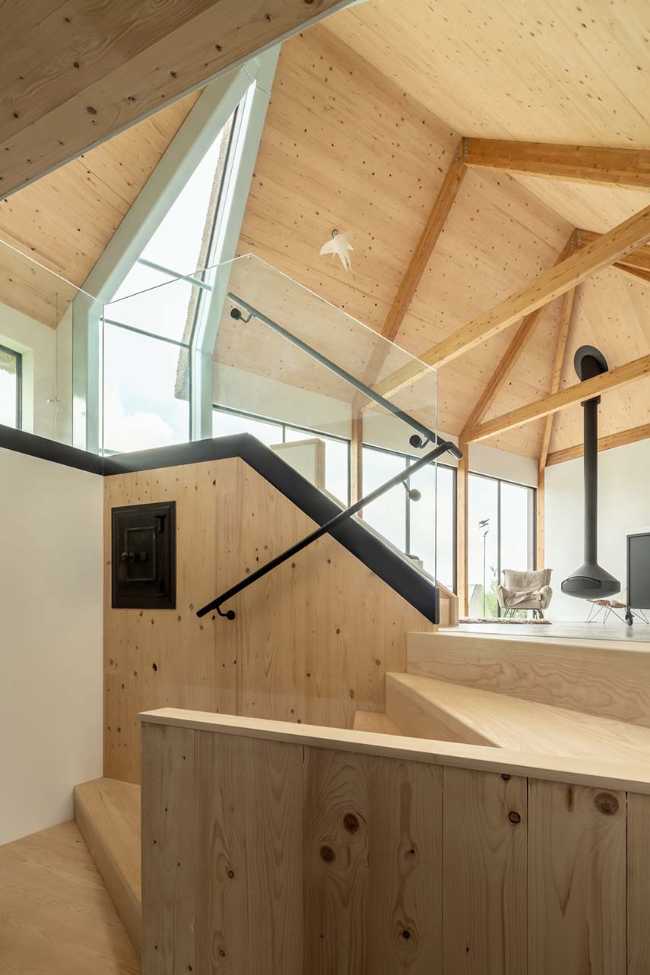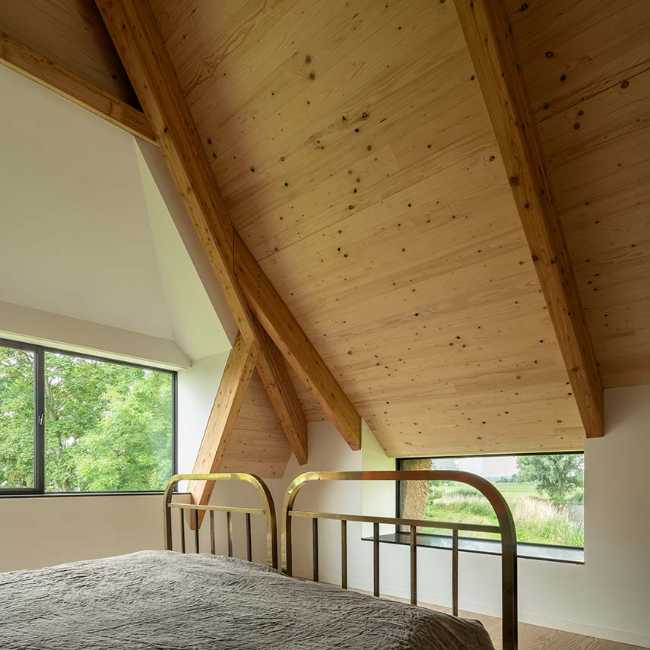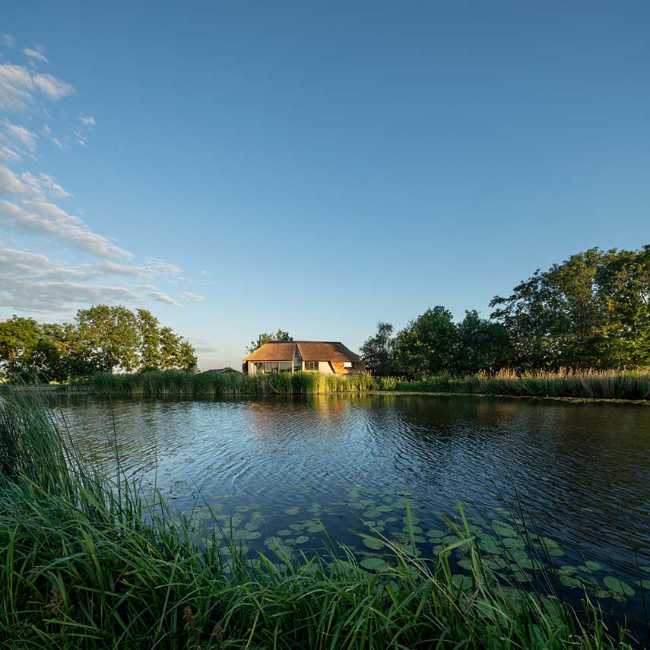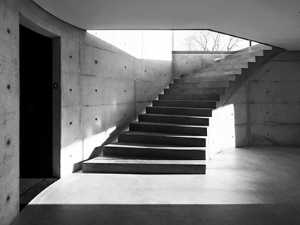Glass and view enter the living space
Mirck Architecture designing the new Dike House uses the splendid available views, natural light, and wood. Mirck proposes to open the living space to the north, breaking the volume of the house from the side opposite the dike, facing the polder landscape. The outer corner of the new fissure is completely glazed and brings a lot of natural light into the large open space, creating the sensation of being part of the landscape.

